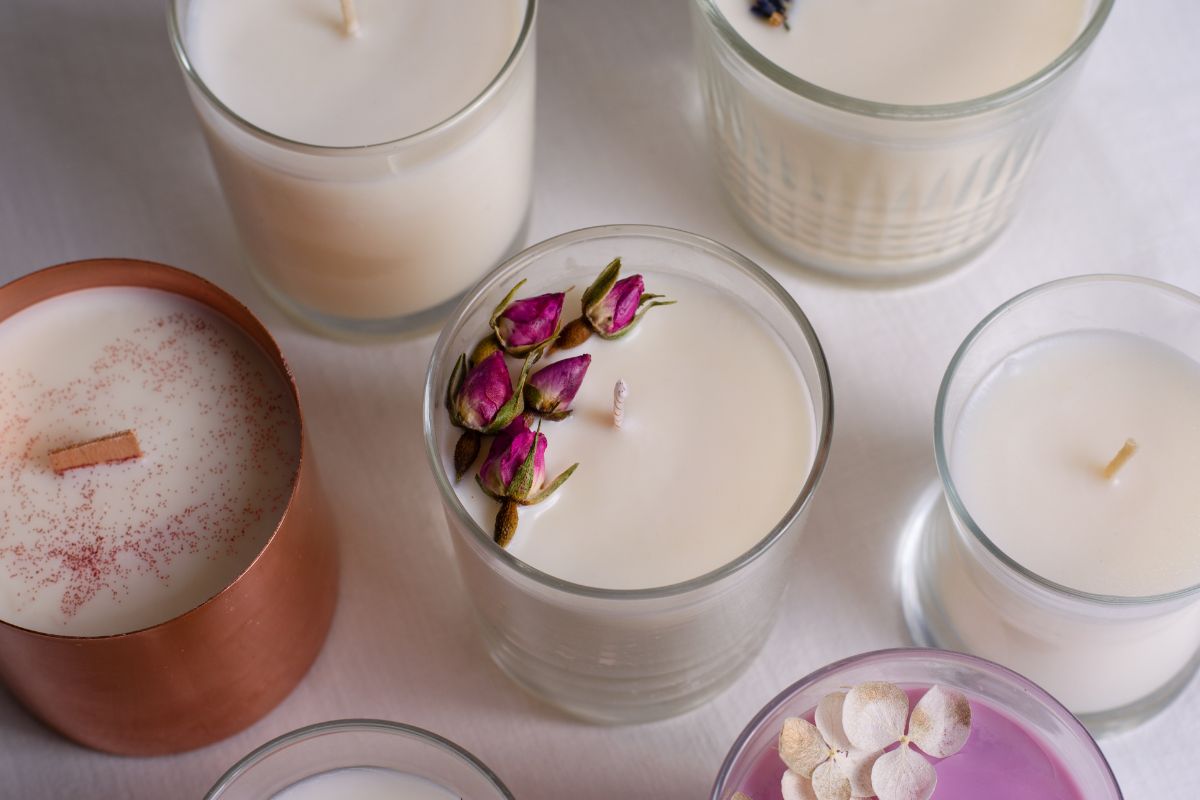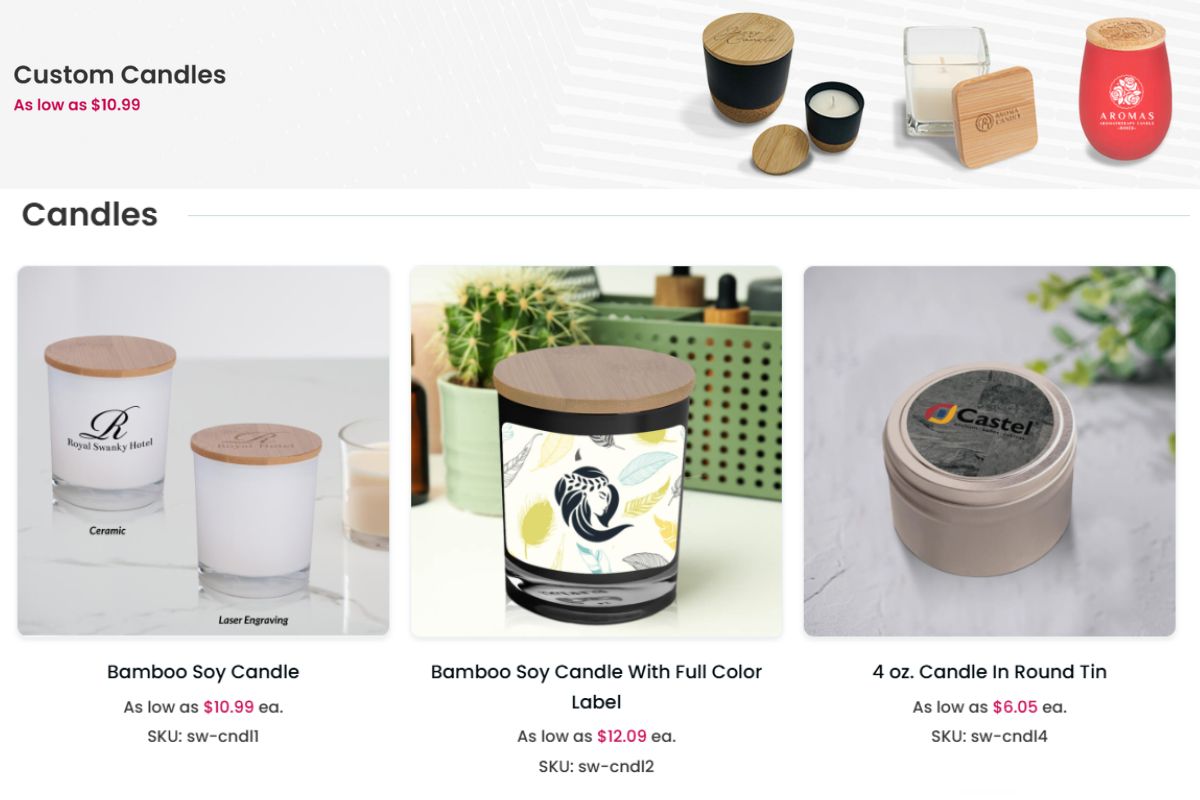Making candles at home can be a rewarding and profitable venture.
You can start a candle business by learning how to make different types of candles using simple materials like wax, wicks, and fragrances. This craft allows you to express your creativity while potentially earning money from your creations.
As you explore this hobby, you’ll find various candle-making techniques and a range of materials to work with.
Table of contents
- Understanding Candle Making Basics
- Designing Your Candle Line
- Building a Candle Business Brand
- Planning Your Candle Business
- Setting Up Your Candle Shop
- Marketing Your Candles
- Managing Candle Production and Inventory
- Optimizing Operations for Growth
- Frequently Asked Questions
- Can I make candles at home and sell them?
- Is selling homemade candles profitable?
- How do I start a candle business from home?
- What are the legal requirements for selling candles made at home?
- What materials do I need to start making candles at home to sell?
- How can I market my homemade candles effectively?
Understanding the basics of candle making will help you create unique products that can stand out in the market. From sourcing high-quality supplies to experimenting with scents and colors, you’ll have the freedom to develop your own style.
Selling candles from home can be done through online platforms or local markets, which makes it accessible for anyone willing to put in the effort. With the right strategies, you can turn your passion for candle making into a successful business.
Start your journey today and discover the satisfaction of creating beautiful candles for others to enjoy.
Understanding Candle Making Basics
When making candles at home, it’s important to know the different types of wax, essential supplies, and the basic steps in the candle-making process. This knowledge will help you create quality candles that appeal to customers.
Types of Wax and Their Properties
There are several types of wax commonly used for candle making. Each type has its own characteristics:
Soy Wax: This is eco-friendly and burns cleaner than paraffin. It holds fragrance well and is great for making scented candles. Soy wax is a good choice for beginners.
Paraffin Wax: This is the most popular type for candles. It’s inexpensive and offers a wide range of melt points. However, it can produce soot when burned.
Beeswax: A natural wax that burns slowly and has a subtle honey scent. It’s more costly but offers a beautiful look and is a popular choice for luxury candles.
Palm Wax: This gives a unique crystalline appearance and is biodegradable. It can be more challenging to work with than soy or paraffin.
Choosing the right wax depends on the type of candle you want to make and how you plan to sell them.
Essential Candle Making Supplies
Here’s a list of supplies you need to get started:
Candle Wax: Choose between soy, paraffin, or other types based on your preference.
Wicks: These come in various sizes. Make sure to select the right wick for the type of wax and the size of the candle jar.
Candle Jars: Use heat-resistant containers. Glass jars are common because they let you see the candle’s color.
Fragrance Oils: These enhance the scent of your candles. Choose high-quality oils for better performance.
Dyes: Use candle dyes to add color to your creations. Liquid or block dyes work well.
Double Boiler: This helps in melting the wax safely. Always use it to prevent scorching the wax.
Having the right supplies will make your candle-making process smoother and more enjoyable.
The Candle Making Process
To start making candles, follow these steps:
Measure and Melt: Quantify the wax you need based on your jar size. Use the double boiler to melt the wax gently.
Prepare the Wick: Attach the wick to the bottom of the jar using a wick holder or glue dot. Ensure it’s centered for even burning.
Add Fragrance and Dyes: Once the wax is melted, you can add dye and fragrance oil. Stir well to mix thoroughly.
Pour the Wax: Carefully pour the melted wax into the prepared jar. Keep the wick centered during this process.
Cool and Trim: Allow the candle to cool completely. Once set, trim the wick to about 1/4 inch.
Following these steps, you’ll create beautiful homemade candles ready for sale.
Designing Your Candle Line
| Step | Description |
|---|---|
| 1. Research & Plan | Identify your target market, candle types (soy, beeswax, paraffin), and unique selling points. |
| 2. Gather Materials | Buy wax, wicks, fragrance oils, dyes, jars/molds, a double boiler, a thermometer, and labels. |
| 3. Prepare the Work Area | Set up a clean, safe space with proper ventilation and heat-resistant surfaces. |
| 4. Melt the Wax | Use a double boiler to melt wax slowly, monitoring the temperature (ideal: 170–180°F). |
| 5. Add Fragrance & Color | Once melted, add fragrance oil (about 6-10% of wax weight) and dye, then mix well. |
| 6. Prepare the Molds/Jars | Attach the wick to the center using a wick holder or glue at the bottom of the container. |
| 7. Pour the Wax | Let the wax cool slightly (to 140–150°F) before pouring it into molds/jars. |
| 8. Let Candles Set | Allow candles to cool and harden for 24 hours without moving them. |
| 9. Trim the Wick | Cut the wick to about ¼ inch for optimal burning. |
| 10. Test the Candles | Burn a test candle to check scent throw, wick performance, and burn time. |
| 11. Packaging & Branding | Design labels and packaging that align with your brand’s aesthetic. |
| 12. Pricing & Marketing | Calculate costs, set a profitable price, and market your candles on social media, Etsy, or a personal website. |
| 13. Start Selling | List your candles online, attend craft fairs, and promote them through word-of-mouth and ads. |
Creating a unique candle line involves careful consideration of scents, colors, and design elements. Your choices will distinguish your products in the market and appeal to your target customers.
Focus on scents that resonate and colors that attract attention. The visual and aromatic appeal of your candles will play a crucial role in their success.
Choosing Scents and Colors
Selecting the right scents is essential for your product line. Consider using a mix of fragrance oils and essential oils. While essential oils are popular for their natural qualities, fragrance oils can provide unique blends that appeal to different preferences.
When creating your line, think about popular and best-selling candle scents such as:
- Lavender
- Vanilla
- Citrus
- Eucalyptus
- Sandalwood
These scents work well in various types of candles, including aromatherapy candles and luxury candles. Pairing scents thoughtfully can also enhance the experience. For example, you could mix citrus with mint for a refreshing aroma.
Color is just as important as scent. Use candle dyes to complement your scents. Bright colors might convey energy, while softer tones can promote calmness. Always aim for colors that enhance your candle’s theme and purpose.
Creating Unique Candle Designs
Your candle designs set the stage for your brand identity. Consider the type of candles you want to create, such as decorative candles, vegan candles, or natural candles. Each type appeals to different markets, so choose accordingly.
Think about unique designs that make your candles stand out. You can incorporate options like layered colors, embedded botanicals, or themed containers to attract customers. The presentation is key; visually appealing candles can prompt impulse purchases.
Labeling is another important aspect. Ensure that your candle labels reflect your brand. Include scent descriptions, weight, and any safety warnings clearly. A well-thought-out design will not only attract buyers but also build brand loyalty and recognition.
Building a Candle Business Brand
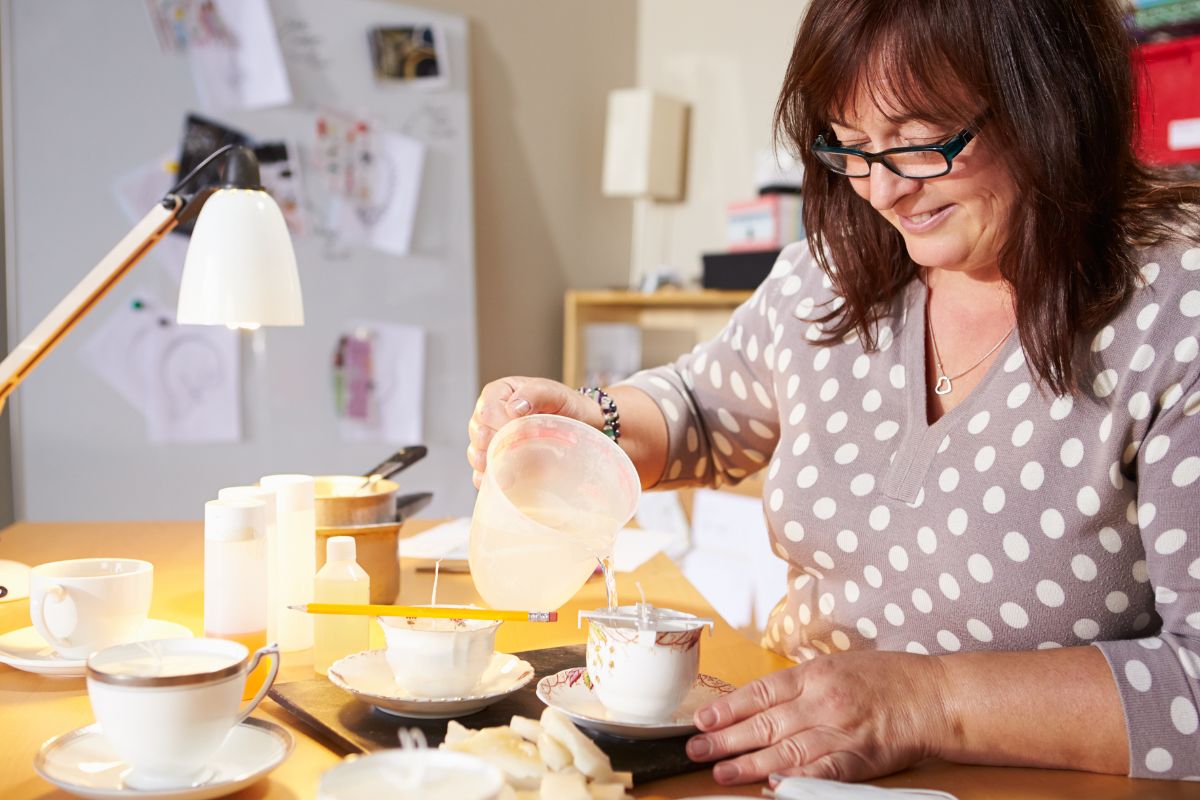
Creating a strong brand is essential for your candle business. A memorable brand story and visual elements will help you connect with customers and stand out in the market. Let’s explore how to build your brand effectively.
Developing a Compelling Brand Story
Your brand story should reflect your passion for candle making. Share why you started this journey and what inspires your creations. This personal touch can resonate with customers.
Focus on the unique aspects of your candles. Are they made from sustainable materials? Do they feature special scents? Make sure to highlight these points in your story. Customers appreciate transparency and authenticity.
Additionally, consider how your brand values align with your target audience. If you focus on eco-friendly practices, emphasize this in your narrative. A relatable story increases customer loyalty and encourages them to choose your candles over others.
Designing Visual Brand Elements
Your visual brand elements include your candle business name, labels, and packaging.
Choose a name that reflects your style and connects with your audience. Ensure it is memorable and easy to spell.
Design candle labels that are eye-catching and informative. Use clear fonts and authentic colors that represent your brand identity. Labeling should include essential information like scents and ingredients.
Packaging also plays a vital role in your brand. Consider using eco-friendly materials that appeal to environmentally conscious customers. A beautiful presentation can make customers feel special and enhance their buying experience.
Planning Your Candle Business
| Category | Best Options | Why It’s Best |
|---|---|---|
| Wax Types | Soy Wax | Eco-friendly, burns clean, good scent throw |
| Beeswax | Natural, long-burning, air-purifying | |
| Coconut Wax | Sustainable, excellent scent retention | |
| Paraffin Wax | Strong scent throw, cost-effective | |
| Wick Types | Cotton Wicks | Burns evenly, non-toxic, best for most waxes |
| Wooden Wicks | Crackling sound, aesthetic appeal | |
| Hemp Wicks | Eco-friendly, burns longer | |
| Containers | Glass Jars | Heat-resistant, stylish, reusable |
| Tin Containers | Portable, durable, good heat retention | |
| Ceramic Jars | Luxurious, high-end feel | |
| Fragrance Oils | Lavender | Relaxing, stress-relieving |
| Vanilla | Warm, comforting, crowd-favorite | |
| Coconut | Sweet, tropical scent | |
| Sandalwood | Woody, grounding, long-lasting | |
| Citrus (Orange, Lemon, Grapefruit) | Fresh, energizing, clean | |
| Eucalyptus | Refreshing, spa-like, good for sinuses | |
| Rose | Floral, romantic, elegant | |
| Peppermint | Cool, refreshing, great for focus | |
| Best Scent Combinations | Lavender + Vanilla | Soothing, great for relaxation candles |
| Coconut + Lime | Tropical, refreshing, best for summer candles | |
| Sandalwood + Amber | Warm, rich, luxurious | |
| Citrus + Mint (Lemon + Peppermint) | Energizing, fresh, great for workspaces | |
| Eucalyptus + Spearmint | Spa-like, stress-relieving | |
| Rose + Jasmine | Romantic, floral, feminine appeal | |
| Cinnamon + Apple | Cozy, autumn-inspired, festive | |
| Dye Types | Natural Mica Powders | Non-toxic, adds shimmer |
| Liquid Candle Dye | Easy to mix, vibrant colors | |
| Crayon Shavings (not recommended) | Can clog wick, uneven burning | |
| Label & Packaging Materials | Kraft Paper Labels | Eco-friendly, rustic look |
| Clear Waterproof Labels | Sleek, professional appearance | |
| Custom Stamped Packaging | Handcrafted, boutique feel |
As you prepare to start a candle business, careful planning is essential. Understanding your market and creating a solid business plan will help you succeed. Here’s how to get started.
Conducting Market Research
Before launching, conduct thorough market research. This means looking into the candle industry and understanding current trends. Focus on your target market—who will buy your candles?
Use surveys or interviews to gather feedback. Identify popular scents, colors, and styles that customers want.
Check out competitors in your area and online. Take note of their pricing, marketing strategies, and customer reviews. This will help you find gaps in the market where your products can stand out.
Keep track of your findings in a chart or list. This information will guide your decisions as you move forward.
Defining Your Business Plan
Your business plan outlines your goals, strategies, and budget.
Start by writing a clear mission statement. This is what your candle business aims to achieve.
Next, define your products. Will you offer scented, colored, or decorative candles? Consider how your products meet customer needs.
Also, plan your pricing strategy. Research competitor prices to stay competitive while ensuring profits.
Include operational details too. Decide if you’ll work from home, what supplies you need, and how much startup capital you’ll require.
A well-thought-out business plan is a roadmap. It will guide your candle-making journey and keep you focused on your goals.
Setting Up Your Candle Shop
Setting up a candle shop involves selecting the right platform for selling and understanding the important safety and compliance issues related to your products. This foundation will help your candle business thrive and create a positive experience for your customers.
Choosing a Selling Platform
You have several options when it comes to selling your homemade candles. Here are some popular platforms:
Online Store: Creating your own website allows you to showcase your brand. Use platforms like Shopify or WooCommerce to set up your store easily.
Marketplaces: Consider sites like Etsy or Amazon. These platforms have existing traffic and a large customer base, but they may take a percentage of your sales.
Social Media: Use platforms like Instagram and Facebook to sell directly to customers. Engaging posts and ads can help attract buyers.
Each platform has its pros and cons, so pick one that aligns with your goals. Think about your target audience and where they shop.
Understanding Compliance and Safety
Candle safety and compliance are critical when selling candles. You need to ensure your products are safe for customers. Here are key steps:
Materials: Use high-quality wax, wicks, and scents. For example, soy wax is eco-friendly and burns cleanly.
Labeling: Clearly label your candles with safety warnings and ingredients. This helps customers know what they are buying and how to use it safely.
Regulations: Check local laws regarding selling homemade products. You might need business licenses or permits.
Testing: Always burn-test your candles to ensure they do not produce harmful fumes and burn properly.
By following these guidelines, you can create candles that not only look good but are also safe for your customers.
Marketing Your Candles
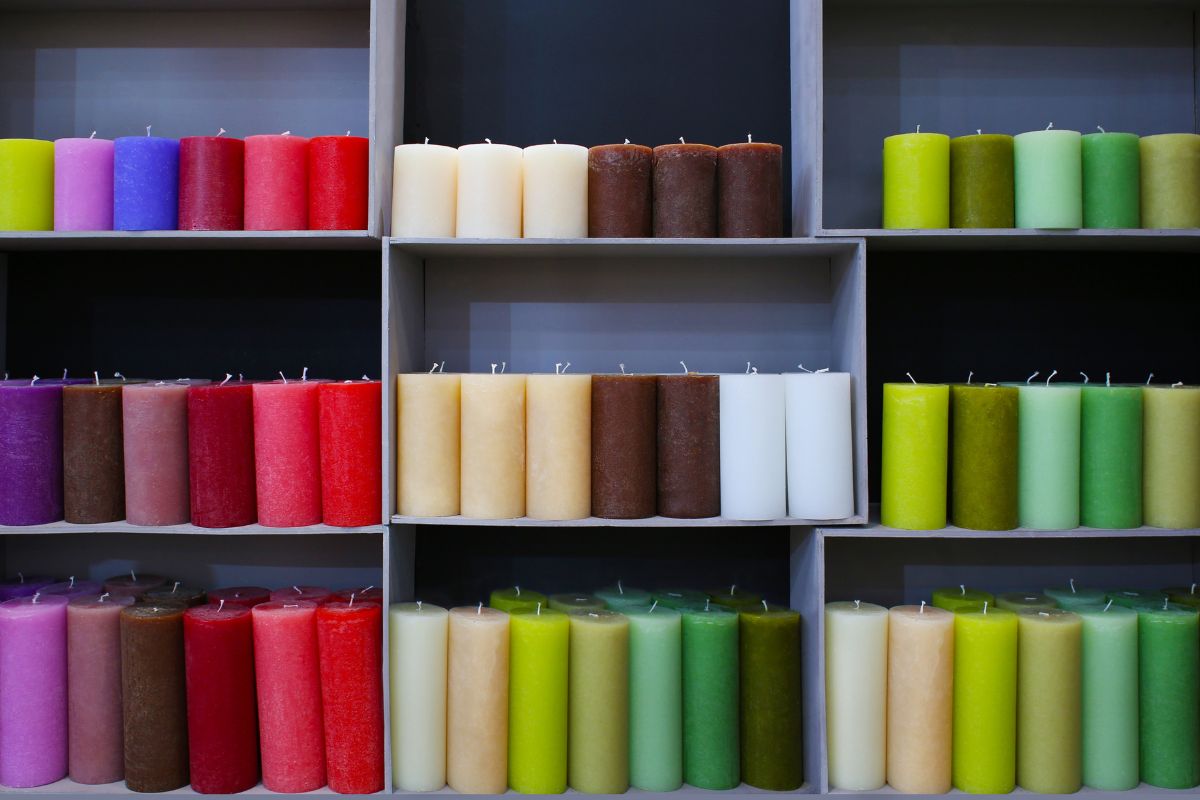
To be successful in selling candles, you need a solid understanding of who will buy your products and how to reach them. Developing a clear marketing strategy will help you attract the right customers and boost your sales.
Identifying Your Target Audience
Your target audience is the group of people most likely to buy your candles. Consider factors such as:
- Age: Are you targeting young adults or families?
- Interests: Do they enjoy home decor, wellness, or eco-friendly products?
- Income: What is their spending power?
Once you have a profile of your ideal customer, you can tailor your marketing.
For example, if you target eco-conscious buyers, emphasize sustainable materials and packaging in your promotions.
Use social media platforms that your audience frequents to engage with them directly, showcasing your products and sharing your story.
Crafting an Effective Marketing Strategy
An effective marketing strategy combines various methods to reach your target customers. Start with a clear brand identity. Your brand should reflect the style and values of your candles.
Consider these marketing approaches:
- Social Media: Use Instagram and Facebook to showcase your candles. Post high-quality images and engage with followers through contests or polls.
- Email Marketing: Collect emails and send newsletters with promotions and new product launches.
- Craft Fairs: Attend local markets to meet customers face-to-face and get immediate feedback.
Collaborations with influencers can also expand your reach. Offer free products in exchange for posts on their channels. This can help increase your visibility in the candle market.
Managing Candle Production and Inventory
| Category | Best Practices | Details |
|---|---|---|
| Raw Material Inventory | Track stock levels | Maintain records for wax, wicks, fragrance oils, and containers to prevent shortages. |
| FIFO (First In, First Out) | Use older materials first to avoid expiration (especially fragrance oils). | |
| Bulk Purchasing | Buy in bulk to save costs but ensure proper storage. | |
| Production Planning | Batch Production | Make candles in batches to ensure consistency. |
| Standardized Recipes | Maintain accurate measurements for wax, fragrance, and wicks for uniform quality. | |
| Quality Control | Test burn each batch to ensure proper burning and scent throw. | |
| Inventory Management | Use an Inventory System | Track materials, finished products, and sales using software (e.g., Excel, Zoho, or Craftybase). |
| Label & Categorize | Organize candles by fragrance, size, and production date for easy tracking. | |
| Restocking Plan | Set reorder points for materials to avoid delays. | |
| Storage & Shelf Life | Proper Storage | Keep candles in a cool, dry place to prevent melting or scent loss. |
| Avoid Direct Sunlight | Store away from heat and light to maintain quality. | |
| Expiration Check | Regularly check fragrance oils and dyes for freshness. | |
| Order Fulfillment | Efficient Packing | Use bubble wrap or eco-friendly padding for fragile jars. |
| Label Orders Clearly | Include scent, burn time, and safety instructions. | |
| Shipping Strategy | Choose reliable couriers and offer multiple shipping options. | |
| Tracking Sales & Demand | Monitor Bestsellers | Track which scents and styles sell the most to adjust production. |
| Seasonal Planning | Increase stock before peak seasons (holidays, fall/winter). | |
| Customer Feedback | Collect reviews to understand preferences and improve quality. |
To run a successful candle business, managing production and inventory is key.
Start by organizing your candle-making supplies. Keep track of raw materials like soy candle wax, wicks, jars, and fragrance oils.
Create a simple inventory system. You can use a spreadsheet or inventory management software. This helps you monitor stock levels and avoid shortages. Include columns for:
- Item name
- Quantity on hand
- Reorder level
- Supplier information
Regularly assess your inventory. Check stock levels weekly to ensure you have enough materials for production. If you notice low supplies, reorder promptly.
When producing candles, consider batch sizes. Make enough candles to meet demand without overproducing. Track production with a log to identify trends in sales.
You should also account for your cost of goods sold (COGS). This includes all expenses related to making your candles, from wax to packaging.
Knowing your COGS helps you set the right price and improve profits.
Lastly, think about storage. Keep your candles in a cool, dry place. Ensure your raw materials are also stored properly to maintain their quality.
Optimizing Operations for Growth
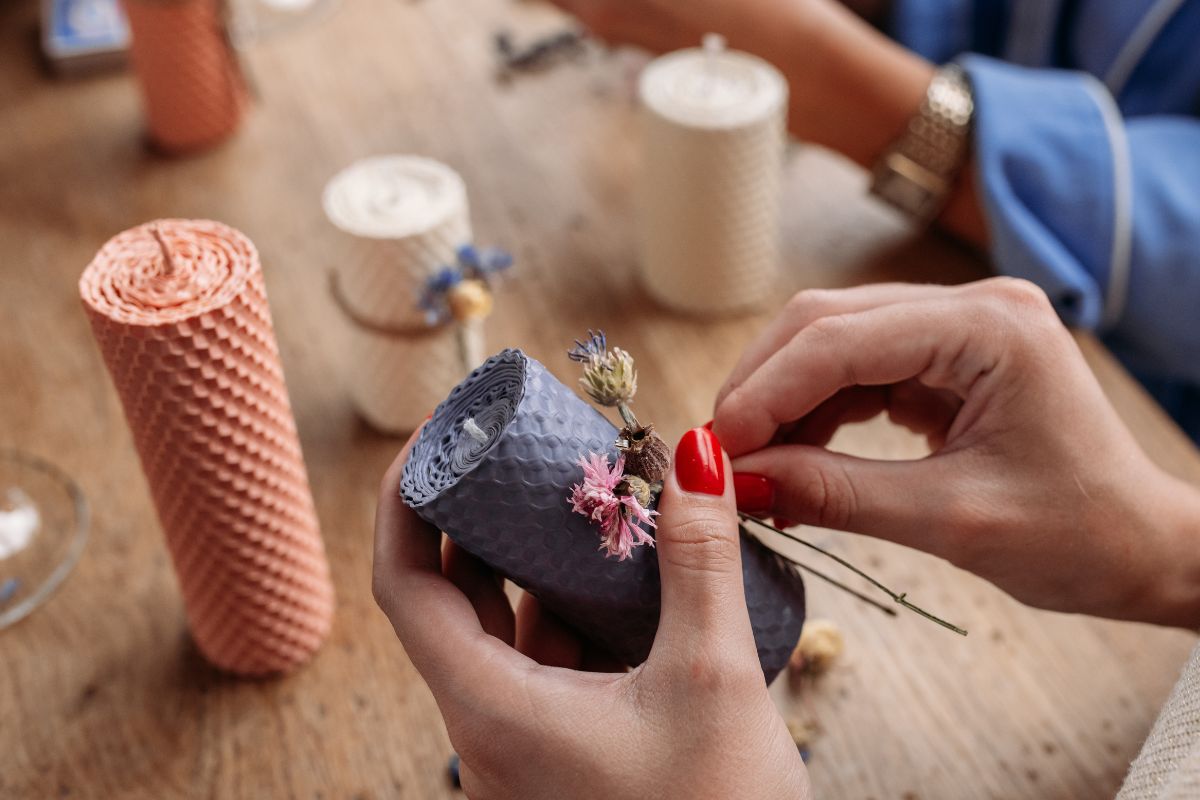
To grow your candle business, you need efficient operations. Here are some key strategies:
Plan Production Wisely
Instead of making candles one at a time, consider batch production. This saves time and resources. Make several candles of the same scent at once to speed up your process.
Streamline Your Supply Chain
Use reliable suppliers for wax, wicks, and other materials. Bulk buying can reduce costs and ensure you always have enough stock.
Create a Schedule
Set a regular production schedule. This helps you manage your time and ensures you meet orders promptly.
Quality Control
Check each batch for quality. Consistent quality keeps customers happy and encourages repeat purchases.
Monitor Market Trends
Stay updated on what customers want. Offering seasonal scents or trendy designs can attract more buyers.
Leverage Technology
Use software for inventory management and sales tracking. This keeps your operations organized and helps identify areas for improvement.
Engage with Customers
Get feedback through surveys or social media. Understanding customer preferences can guide product development and marketing strategies.
Frequently Asked Questions
You may have many questions about making and selling candles at home. Below are answers to common inquiries that can help guide you through the process.
Can I make candles at home and sell them?
Yes, you can make candles at home and sell them. Many people successfully run candle businesses from their homes. However, it’s important to follow safety guidelines and legal requirements to protect yourself and your customers.
Is selling homemade candles profitable?
Selling homemade candles can be profitable if you create quality products. Your profits depend on factors like cost, pricing, and demand. By selecting the right materials and marketing your candles effectively, you can build a profitable business.
How do I start a candle business from home?
To start a candle business, first, decide on the types of candles you want to make. Next, develop a business plan that outlines your goals and strategies. It’s essential to gather necessary materials and create a workspace.
What are the legal requirements for selling candles made at home?
Legal requirements vary by location. Generally, you may need to obtain a business license and a state sales tax permit. Some areas also require a Certificate of Occupancy, especially if you are running a business from your home.
What materials do I need to start making candles at home to sell?
To make candles, you need wax, wicks, fragrance oils, and containers or molds. You may also want colorants for decorative candles. It’s essential to choose high-quality materials to ensure the safety and appeal of your candles.
How can I market my homemade candles effectively?
You can market your candles through social media platforms, online marketplaces, and local craft fairs. High-quality photography and clear product descriptions can greatly enhance your appeal.
Building a brand and engaging with your audience also helps attract customers.

